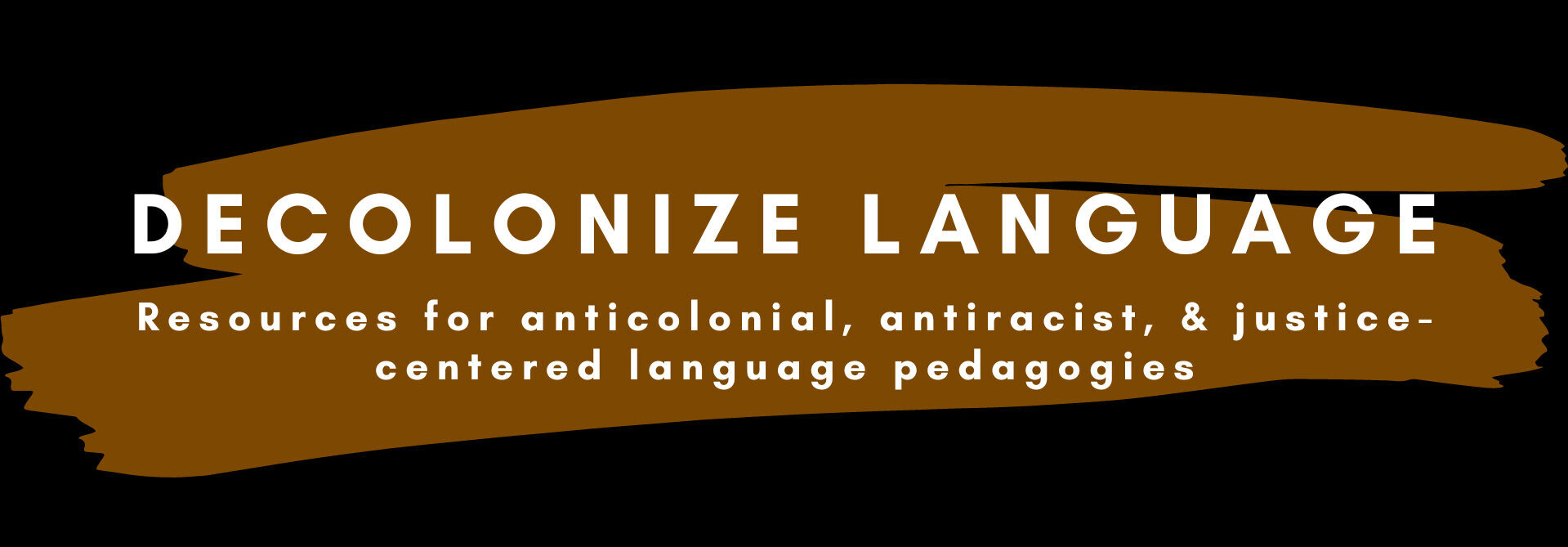
Representation, Inclusion, and Activism: Small Steps Matter
Perceptions of Representation
I have been teaching Spanish for nearly 20 years. In all of those years, the language departments in which I worked used textbooks to support instruction, in some way or another. While some texts have been better than others, a common thread among all the texts is a lack of representation when it comes to historically (and currently) marginalized groups, such as Black Latinx populations and members of Latinx LGBT+ communities. For example, in all the textbooks I’ve ever used, not even once can I recall even seeing a trans person, much less a critical examination of the various elements and intersections of that identity.
This lack of representation warps students’ views about what a language class should be. For example, consider the student reflection below (from my third-semester university-level Spanish class):
“The topics regarding things such as LGBTQ have nothing to do with Spanish culture and I feel that topics like that should remain reserved for ethics classes. I would have loved to know more instead about Spanish food, dances, architecture, etc.”
This comment reflects the expectations and experiences of many of our students. If “culture” is understood to be “things” like food, dances, and architecture (as opposed to lived experiences of diverse communities), we create fictitious, imagined worlds in which certain identities do not exist in the speech communities of the languages that we study. More dangerously, we reinforce stereotypes that students may have about the people and cultures studied—and in some cases even introduce new stereotypes! As evidenced by the student’s reflection, we see how jarring and unexpected it can be when certain marginalized identities are simply brought into the conversation. And really, representation alone (simply seeing and hearing marginalized voices) is the absolute lowest bar; if we stop at mere representation, then it amounts to nothing more than tokenism. I like to think of representation as the first step on the path to true diversity—the kind of diversity that is embedded into the power structures of our institutions.
Windows, Mirros, & Sliding Doors
On the topic of how we go about diversifying our curriculum, my colleague Uju Anya and I (2019) wrote:
To set the stage for this discussion, we call on the analogy of Bishop (1990), in which she posits that a diverse curriculum should be a window, a mirror, and a sliding glass door—a window through which students examine and learn from the perspectives of others, a mirror showing students their own experiences and cultures validated, and a sliding glass door through which students are able to enter into and experience the lives and perspectives of others. We would also add that a diverse curriculum should be the lens through which students apply a critical perspective to what they are studying. A diverse and meaningfully representative curriculum does not happen naturally. We must be intentional about finding and incorporating authentic resources that represent non-dominant target language and learner communities and cultural narratives (e.g., non-white, non-heterosexual, non-cisgender, non-male, non-middle/upper class, non-Eurocentric, non-English) so that these voices may be amplified in our courses and, more importantly, so that our world and social realities can be more accurately and more completely represented. (p. 26)
Even if we follow the guidelines listed above, our students (and we ourselves) may feel like we’re not doing “enough” if our justice-oriented learning doesn’t lead to tangible action and engagement outside of the classroom. I think sometimes we get caught up in assuming that students must engage in activism outside of the classroom in order for it to “count” as justice-oriented pedagogies.
Process-oriented Approach
So, my advice is this; don’t get overwhelmed. The goal isn’t to solve or eradicate injustice in the course of a single lesson or unit or to have students immediately marching in the streets or writing letters to politicians. Students don’t have to go out and immediately change the world. In fact, I would argue that such an approach is dangerous because it reinforces the saviorism narrative that students, armed with their newly discovered critical awareness, must now place the onus on themselves to go out into the world and single-handedly enact justice. Instead, we want to push students to first consider perspectives with which they may not be familiar and then determine how they might align themselves as allies in liberation work already being carried out in those communities.
The Social Justice Standards from the Learning for Justice organization provide a helpful framework for understanding the action/activism element of justice-oriented learning. Here are a couple of the standards that might guide our work as we think about how to move students toward action.
Students will make principled decisions about when and how to take a stand against bias and injustice in their everyday lives and will do so despite negative peer or group pressure.
Students will plan and carry out collective action against bias and injustice in the world and will evaluate what strategies are most effective.
You’ll notice that in the standards above, part of the process of “taking action” involves decision-making, planning, evaluation, and reflection. While action can and should be an important element of justice-oriented learning, it’s important to remember that action takes different forms and involves different steps. Activities that call students to critically reflect and engage in their own perspective-shifting are also a form of activism.
Starting Small
So, how do we do this in the classroom? The answer is to start small. If you are not able to immediately engage students in action-oriented activism in their own and others’ communities, consider engaging students in the experiences below as initial steps. Depending on the proficiency level of the students, these activities may be completed in the language studied and/or in the student’s native language.
- Respond to prompts, activities, and assignments in which they reflect on their own perspective shifting
- Describe and evaluate the impact of historical and contemporary social justice movements in various communities of the language studied
- Brainstorm how they might increase critical awareness of a social justice issue in their own communities
- Identify contemporary activism campaigns in the communities of the language studied and outline how they might align themselves with such efforts
What other “small steps” have you found to be successful with including representation, inclusion, and activism in your classes?
References
Anya, U., & Randolph, L. J., Jr. (2019). Diversifying language educators and learners. The Language Educator, 14(4), 23-27.
Note: This post was originally published as a blog entry for the Center for Open Educational Resources and Language Learning (COERLL) on August 23, 2021.

